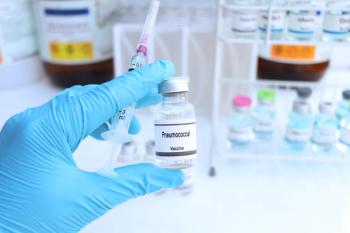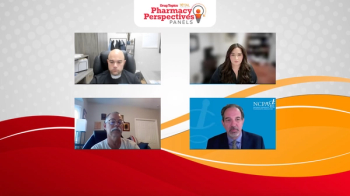
Despite all the talk, new study finds Rx error rate still high
Ken Barker study shows 19% drug error rate in hospitals
HEALTH-SYSTEM EDITION
PROFESSIONAL PRACTICE
Despite all the talk, new study finds Rx error rate still high
A study of 36 hospitals and skilled nursing facilities in two states found a 19% error rate in medications and a 7% rate of potentially harmful drug errors. The study estimated that a 300-bed hospital would experience 40 potentially harmful drug errors each day.
These findings shouldn't surprise anyone, said Bruce Gordon, R.Ph., Pharm.D., director of medical error consulting for BD Healthcare Consulting in Maryland. "No one should think their hospital is exempt from these problems. People should look at that study and say, 'That's probably happening here, but I am not seeing it because I'm not looking for it.'"
A key factor in the new study was that medication errors were directly observed as they were being made, said Gordon. The study's authors, Kenneth N. Barker, Ph.D., R.Ph., and his co-workers, trained a staff of data collectors to watch medication administration on nursing floors at 36 facilities in Colorado and Georgia. The facilities studied included accredited and nonaccredited hospitals and skilled nursing facilities. Barker is Sterling Distinguished Professor and director of the Center for Pharmacy Operations and Design at Auburn University in Alabama.
Direct observation is a much more accurate way of evaluating error rates, said Michael Cohen, R.Ph., D.Sc., president of the Institute for Safe Medication Practices in Huntingdon Valley, Pa. "The researchers are looking for errors, not just waiting for a report."
Medical and medication errors have been in the spotlight since 1999, when the Institute of Medicine (IOM) published a report of the consequences and costs of such events. The new study evaluated adverse drug events (ADEs) that stem from delivery and administration of medications rather than from prescribing errors, according to Barker.
The number of hospitals and the range in size and type in this study mean that ADEs are widespread. "This is not a matter of individuals or isolated incidents. It is a systemic problem, just as IOM concluded," Barker said.
Previous studies of ADE rates were done in teaching hospitals, said Barker. This raised the question of whether ADE rates are higher at teaching hospitals because they have more complicated cases and sicker patients or lower because they have more highly trained staffs, he noted. The new study, published in the Sept. 9 issue of Archives of Internal Medicine, found higher rates of ADEs at nonteaching hospitals.
A total of 3,216 doses of medications were observed being administered by nurses over one- to four-day periods at each facility. The number of doses in error was 605. The most common type of error, at 43%, was a drug delivered at the wrong time, defined as a dose delivered more than 60 minutes before or after the scheduled administration time. Of all mistakes, 30% were drug omissions, 17% were wrong doses, and 4% were unauthorized drugs, meaning a drug that had not been ordered for that patient. Seven percent of errors were judged to be potential ADEs, which were defined as medication errors that had the potential to cause a patient discomfort or jeopardize his or her health or safety.
The accreditation status of the hospital did not influence the rate of ADEs. Two hospitals that had zero errors (not counting wrong times) received accreditation during the study period, while the hospital with the highest rate, 26.2%, was also accredited. Although the facilities received reports on their error rates, none was contacted to find out what each was doing to reduce errors, Barker said.
A drug delivered at the wrong time is not considered a serious mistake, Barker acknowledged, but newer drugs have less of a margin of error and need to be delivered on time. Omitted drugs are more serious. "When the patient doesn't get the drug, the patient does not show a response, and the doctor then increases the dose," he said.
Hospitals are looking for ways to reduce error rates, Cohen said. Facilities that use computerized Rx systems are doing better, he noted.
The National Patient Safety Goals program of the Joint Commission on Accreditation of Healthcare Organizations has several recommendations for hospitals to reduce medication errors, Cohen said. They include removal of concentrated electrolytes such as syringes with potassium chloride from patient areas and the elimination of free-flow infusion systems. The program has also created a list of abbreviations that should be banned because of their potential for misinterpretation. "These are the kinds of things that will make a difference," Cohen said.
The biggest change the healthcare system needs is to come to the mind-set that errors are everyone's problem and responsibility, said Gordon. People in health care should be unafraid to stop the system when they see a pending problem, he said.
If this study has made waves, get ready for another one. Barker told Drug Topics he is about to publish a study on error rates in community pharmacies.
Valerie DeBenedette
The author is a writer in New York.
Valerie DeBenedette. Despite all the talk, new study finds Rx error rate still high.
Drug Topics
2002;20:HSE29.
Newsletter
Pharmacy practice is always changing. Stay ahead of the curve with the Drug Topics newsletter and get the latest drug information, industry trends, and patient care tips.






































































































































